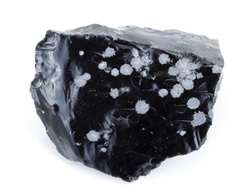Turning glass into clay

The magic mineral and microbial processes that transform volcanic glass into clay have been identified, adding important knowledge to how clay is formed.
Clay is a fascinating natural substance incorporating minerals, metal oxides and organic matter that could be of value in environmental and industrial applications. As in-depth information about this complex material and mineral-microbe interaction is lacking, the EU-funded project 'Bio-clays from several water media' (BIO-CLAYS) sought to increase the relevant knowledge base. The project investigated how volcanic glass and microorganisms affect clay formation in spring water, fresh water, seawater and very salty water.
BIO-CLAYS conducted a series of experiments on clay formation which involved adding or removing microbial elements and increasing or removing sunlight. It undertook tests related to water chemistry and microbial development which displayed outstanding results with respect to chemical transformation of volcanic glass. The project team successfully isolated about 40 species of algae, fungi and bacteria to understand growth of microbial colonies, improving the effect of biological experiments.
BIO-CLAYS found that the composition of the glass is more important than water chemistry in controlling the type of clay formed. Another valuable observation revealed how microbial action encapsulated glass in a mat of microbes and generated specific chemical conditions to produce clay. Perhaps the most crucial finding was that microbial action did not accelerate clay formation in general, with the exception of reactions in very salty water.
Overall, the project successfully identified the clays formed and the effect water chemistry and biological factors had on the early stages of clay formation. This helps scientists in researching geo-microbiology and conducting experiments with surface reaction studies. The results improve knowledge of mineral transformation and mineral-microbe interaction, with notable implications for industrial and environmental applications worldwide.
Provided by CORDIS


















